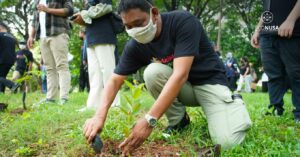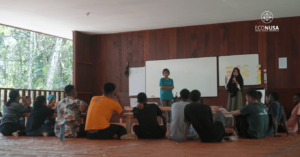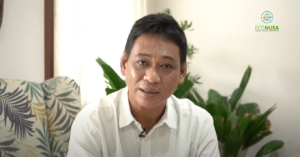
Papua is known for its rich culture and tradition. There are around 255 tribes in the Land of Papua with different cultures and languages. One of the existing tribes is the Miere Tribe who inhabit the Etna Bay area in Kaimana, West Papua.
In mid-December 2022, I visited Kaimana to document the Miere tribe’s customary meeting. The Miere tribe was legalized 15 years ago through a customary meeting in Kaimana Regency.
Anthropology lecturer at the University of Papua, Adolof Ronsumbre, in the book Encyclopedia of Tribes in West Papua, states that the Miere tribe is an integration of several clans, namely Abujani, Karafey, Maramoy, Raifora, and Raurukara. In this district, the Miere tribe is spread across the central part of the bird’s head on the island of Papua, namely around the Wosimi spring and the headwaters of the Urema river in the Etna Bay District.
Read also: Noken: Local Wisdom with Incredible Values
The Miere tribe recognizes the traditional leadership system. One of them is the tribal chief who has the highest position and holds full authority over all matters relating to village administration.
I departed with EcoNusa Kaimana staff, facilitators, and the customary assembly activity committee on December 16, 2022. We departed at 05.00 local time from Kaimana by longboat to Etna Bay. We arrived there around 11.30 local time.
The customary meeting was opened by the Deputy Regent of Kaimana, Hasbulla Furuada, on 17 December 2022. The community was very pleased with the presence of the Deputy Regent. Then the activity continued with the socialization of customary territories mapping and discussions with indigenous people regarding the territorial boundaries, as well as the election of village heads.
Read also: Menginang: Caring the Culture, Empowering the Land of Papua
The election of tribal chiefs is carried out by a voting system. Mr. Donatus, a local youth from the Miere Tribe, immediately asked the elders and tribal representatives one by one and found one name that was elected with the most votes. Sutran Awjani was elected as chief of the tribe.
The next day, December 18, 2022, the activity continued with the process of identifying tribes, making sketches of clan maps, and constructing the maps through imagery.
The interesting thing about the Miere Tribe is the important role of women. In the Miere tribe, every important decision must involve women. That is why every matter that must be decided in a customary meeting is through a process of listening to women’s aspirations, even though it is still men who make the final decisions.
Read also: Moni and Mee Tribes, Used to Wage War, Now Live in Peace
In terms of tribal boundaries, women can show the boundaries if men have no knowledge of them. Women usually understand more about their territory as they spend more time in the forest, to harvest and search for food. This was a lesson for me to support more indigenous women so that they have improved skills like men, as the Miere people do.
I also learned about the importance of customary meetings to protect clan boundaries from outsiders. In the 1990s, the Miere Tribe’s territory was exploited by large companies, so that the forest was depleted, while the life of the indigenous people did not develop.
Most companies have standard operating procedures to empower local communities. But the implementation of the SOPs are very minimal. It is also a source of conflict for society. Learning from this, customary meetings have an important meaning in discussing the protection, utilization and potential of the area. This tradition of customary deliberations must be maintained.







